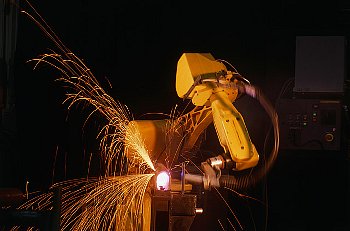Restructuring the “D” in R&D

Recently we wrote about emerging models for Research (the “R” in R&D) and how the US government can encourage and support them. But what about Development – the “D” in R&D? The majority of spending in R&D is in fact allocated to development, which includes costs associated with market analysis, manufacturing (engineering, quality control, logistics) and advertising. Traditionally, large corporations like Intel, Pfizer and IBM, did both their research and development in-house. However, just as we are seeing a decoupling of research from development, we’re seeing traditionally held beliefs about development being challenged as well through outsourcing, individualization, and automation.
Myth #1: Development is done in factories owned by the company. The good old days when companies manufactured products in their own factories are long gone. For some time now, the trend has been to outsource manufacturing to other companies, especially those in low-cost countries like China. This is unlikely to change. Just take the example of Apple: all its design and marketing is done in the US by 25,000 Apple employees, while all the assembly and manufacturing is done by 250,000 Foxconn employees in China. As Andy Grove wrote in his brilliant article on the unfortunate outsourcing of US manufacturing, “that means for every Apple worker in the U.S. there are 10 people in China working on iMacs, iPods and iPhones.”
Myth #2: Taking a product from research to scale is a development process that only large corporations can undertake. Traditionally, as an individual, the best you could do with your design was to create a very crude prototype and show it to a large company. If you were lucky and the firm executives liked your idea, they would make a refined prototype in their lab and then send it to their factories for mass manufacturing, giving you a tiny fraction as a cut. That model is now changing. For the first time in history, an individual can do everything from sketching his design to making a prototype to manufacturing and distributing it: that’s why the movement is called Do-It-Yourself (DIY). For example, you can design a chair in Google Sketchup (Google’s superb 3D modeling software – free basic version), use a 3D printer Makerbot ($950) to print out a prototype, mail it to a factory in China to mass-produce it and send it to Amazon to distribute. According to WIRED’s Chris Anderson, DIY manufacturing is going to be the next industrial revolution: “Anybody with an idea and a little expertise can set assembly lines in China into motion with nothing more than some keystrokes on their laptop.”
Myth #3: The biggest threat to US manufacturing jobs comes from China. Actually, the biggest competitor to the manufacturing labor market comes from robots, not other countries. Not only the U.S., but also Japan, Brazil and India have experienced steep job losses due to automation. Even China is threatened by the increasing use of smart machines. Yet as Robert Reich writes in his article “The future of manufacturing: Here come the robots”, over the past several decades we have experienced a steep decrease in agricultural employment due to mechanization, and the same is inevitable for manufacturing. This is not necessarily a bad thing: it’s an opportunity to learn new skills. “A quarter of all Americans now work in jobs that weren’t listed in the Census Bureau’s occupation codes in 1967,” Reich points out. So what jobs can one expect then in the manufacturing sector of the future? Repairing robots.
Ayesha and Parag Khanna explore human-technology co-evolution and its implications for society, business and politics at The Hybrid Reality Institute.





